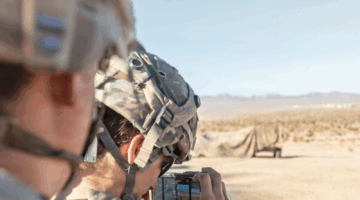
WASHINGTON — Sailing from halfway around the world, four Russian vessels, including a frigate and a nuclear submarine, arrived in Cuban waters this week, the beginning of a five-day-long visit to the island 90 miles from the Florida coast in what Moscow said is “normal practice,” but what experts say is meant to send a message.
The visit by the frigate Admiral Gorshkov, nuclear submarine Kazan, tanker ship Akademik Pashin and rescue tug boat Nikolay Chiker occurs as part of the “historical relations of friendship between Cuba and the Russian Federation,” Havana said in a 6 June press release, adding that “none of the [Russian] vessels carries nuclear weapons, hence their arrival to our country does not represent a threat to our region.”
In a statement, the US military’s Southern Command (SOUTHCOM) said it was “aware that Russian naval ships may transit the Western Hemisphere and dock in Cuba and Venezuela. We are not surprised by this given Russia’s long history of Cuban port calls.”
The command also noted that it “routinely monitor[s] for activities of concern near the homeland and in the region. When detected, we track those activities very closely.” SOUTHCOM declined to comment on which assets will be assigned to monitor the Russian fleet crossing through the Caribbean Sea “for force protection reasons.”
On 13 June it did announce that the Los Angeles-class fast attack submarine USS Helena (SSN 725) is in Guantanamo Bay, carrying out “previously planned” transit through SOUTHCOM’s “geographic area of responsibility while conducting its global maritime security and national defense mission.”
A Canadian off-shore patrol vessel is also stopping in Havana, overlapping several days with the Russian vessels. A spokesperson for the Canadian Department of National Defence suggested to Breaking Defense that even though it’s the first port call for the Royal Canadian Navy since 2016, the stopover is a “routine” one, coming after the navy’s participation in exercises in the Caribbean.
“The Canadian Armed Forces, alongside its US counterparts, routinely carries out operations (including maritime and air operations) in support of continental defence,” the spokesperson said.
Russia occasionally sends vessels and aircraft to Latin America and the Caribbean. However, it is the first time, as far as it is publicly known, that Moscow has deployed warships (or a submarine) to the region since the war in Ukraine commenced in February 2022.
As such, analysts said the presence of the ships in Cuba, a Cold War ally of the Soviet Union and key player in some of the tensest episodes of that period, is a signal to Washington.
Richard Weitz, senior fellow and director of the Center for Political-Military Analysis at the Hudson Institute, said that the mission is a message of “menace” to the United States, as Moscow wants it clear “that the Russian military can threaten the US homeland and nearby regions as much as the US does this in Ukraine.”
Ryan Berg, director of the Americas program at the Center for Strategic and International Studies, also tied the deployment to the conflict in Ukraine, saying it was a response to the Biden administration’s recent decision to allow Ukraine to use American weapons to strike into Russia in limited cases.
“This isn’t Cuban Missile Crisis 2.0, but it is a reciprocal response and a reminder to the US that the Russians can also project military power in the Western Hemisphere,” Berg said.
Both Berg and Weitz agreed that Moscow also wants to show that, after two years of war, losses in the Black Sea and international sanctions, the Russian Navy still has global reach.
Weitz also noted that the visit is a message to Havana, one “of reassurance that Cuba is still an important ally of Russia.”
At the time of publication, it is unclear if the fleet will visit other countries in the region, such as Venezuela. Last summer the training vessel Perekop visited Venezuela after Cuba. Russian warships previously visited these countries in 2013 and 2019, and Moscow also sent two nuclear-capable Tu-160 bomber aircraft to Venezuela in 2018.
Recently, Venezuela’s Minister of Defense, General Vladimir Padrino López, said in a speech that “the United States, as a hegemonic power, has lost hegemonic status.” At the same time, Russia and China are “two great powers, and this bloc has as a goal to create a new world.”
Meanwhile the Russian ships could also stop by Nicaragua. The Latin American country hosts a police training center established by the Russian Ministry of Interior and a ground station for Russia’s GLONASS positioning system, and allows rotational training with Russian military forces.
Wherever Russia’s ships go from here, when the Russian navy is in the Western Hemisphere, especially someplace close to the US like Cuba, “it will keep analysts awake at night to ensure that the engagement does not go beyond port calls and maybe some rhetoric,” Berg said.

